#Method validation
Text
Difference class A and class b glassware use in laboratory
The terms “Class A” and “Class B” are commonly used to describe different types of glassware in laboratory settings, particularly for volumetric measuring. These classes have specific standards and tolerances, and they serve different purposes. Here’s the difference between Class A and Class B glassware:
Class A Glassware:
Class A glassware is of higher precision and accuracy compared to Class…
View On WordPress
#Analytical chemistry#Chromatography#Gas chromatography (gc)#GMP Updates#Hplc#Hplc vials#ICH Guideline#Internal standard#Method validation#optical rotation#QMS
1 note
·
View note
Text
university princess




#studyblr#study blog#study aesthetic#study motivation#study desk#premed#student#student life#study notes#academic validation#study tips#study method
433 notes
·
View notes
Text
DP X DC Prompt
Damian, who’s never seen danny before this moment: we’re twins.
Danny, choosing chaos: triplets, actually. I have an identical sister.
Damian: what.
Bruce, listening in from a roof: Talia hid THREE children from me?!
Talia, on a different roof: Father stole one of my children?! >:(
OR ALTERNATIVELY
Danny: Quadruplets actually. You owe so much child support
Bruce: what-
Dani & Dan: pay up bitch
#danny texts dani and tells her the drama#dani meets the batfam and is all:yes we look identical bc we're triplets#no other reason#yes this does mean danny dani and dan are not white TM#give them melanin you cowards#the alternate one is where Dan gets the therapy he needed#danny dani dan and dami#alternate alternate Amorpho shapeshifts into danny and pretends to be a sibling#He is excited to be part of the quintuplets#amorpho calls himself damy to be consistent#to get around the whole being dead thing amorpho says he was eaten in the womb#he does not say which sibling did it#they play amongus to sus out whodunnit#damian insists this is not a valid method#he is outvoted#dp x dc#dc x dp#dc x dp prompt#dp x dc prompt
3K notes
·
View notes
Text
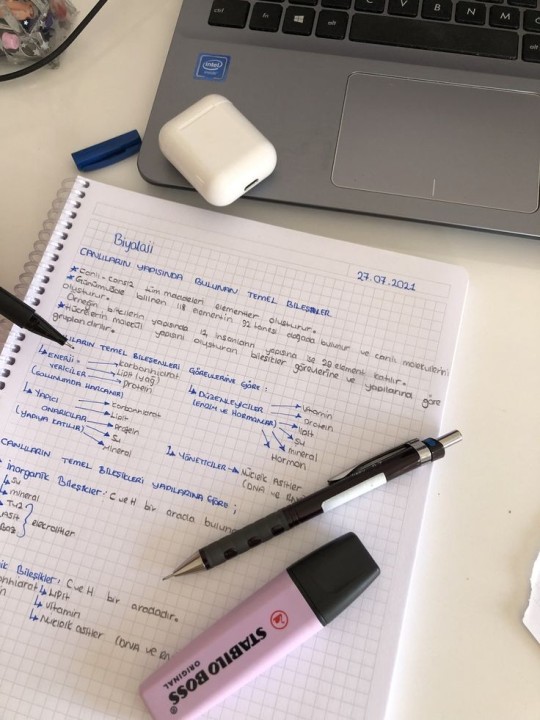

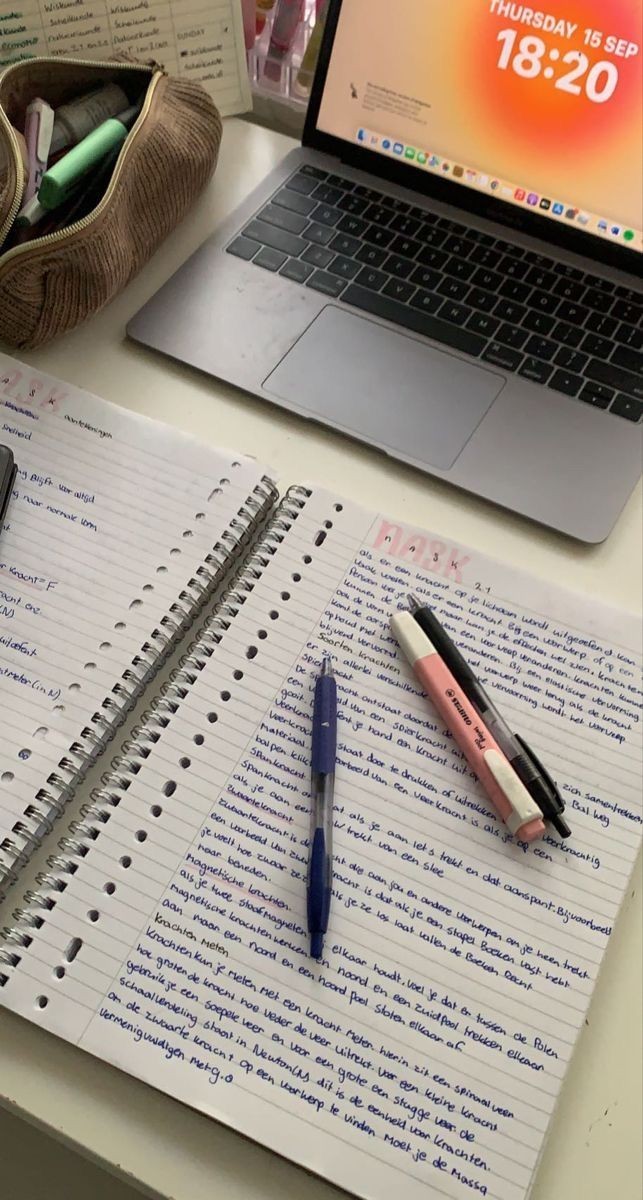
❥﹒♡﹒☕﹒ 𝘁𝗶𝗺𝗲-𝗺𝗮𝗻𝗮𝗴𝗲𝗺𝗲𝗻𝘁 𝘀𝘁𝗿𝗮𝘁𝗲𝗴𝗶𝗲𝘀 𝘆𝗼𝘂 𝗺𝗮𝘆 𝘄𝗮𝗻𝘁 𝘁𝗼 𝗸𝗻𝗼𝘄
𝟭. set SMART goals ( 📒 )
make sure your goals are specific, measurable, actionable, realistic and time-bound. this will help you maintain focus and track your progress over time. how many times has it been you and your unrealistic to-do list against the world? well, it seems that a mile-long to-do list is not a good ally at all. remember that you are a person and not a machine, and that just dedicating four hours to deep work and concentration is A LOT. be kind to yourself and don't overload yourself with more work than you can humanly do.
𝟮. daily planning ( 🧸 )
mea culpa because i'm the first one who doesn't plan their day. to-do lists generally stress me out and make me feel overwhelmed as if i don't manage to complete all the tasks an asteroid will end up hitting the earth. but i recognize that it is a good starting point. sometimes i have too many things to do and i end up doing nothing in total confusion, but having at least a general list to follow gives me more motivation. moreover do we want to talk about the dopamine released when you tick an empty box? marvelous. maybe don't write down tasks that are too onerous and demanding, break them into several smaller tasks, also try to write simple activities such as "drink a glass of water" every now and then. having these low-commitment activities will help you stay motivated while completing more important tasks.
𝟯. reverse-engineering method ( 🪴 )
start with the end goal and work backwards to plan the actions needed to achieve it. this helps you maintain clarity on the steps to take and focus on the most relevant actions. the best thing to do is plan based on the time available and do your best to stick to your daily goal.
𝟰. timer roulette ( ⏳ )
choose a task from your to-do list and set a random timer between 15 and 45 minutes. work on that task with all your concentration until the timer goes off. this helps you fight procastination and keep your mind fresh.
𝟱. mind mapping time ( 📍 )
before starting a study session, take a few minutes to create a mental map of the subject you need to cover. this helps you see connections between concepts and organize information more effectively.
𝟲. task batching ( 🫒 )
group similar tasks together and tackle them in batches. for example, reply to all emails in one session rather than doing so at scattered times throughout the day. this helps you reduce transition time between tasks and maintain focus. contrary to popular belief, human beings are not truly multitasking (only a few possess this great ability) and when we do multiple things together we do nothing but shift our attention from one task to another, greatly reducing the quality of our performance. if possible, try to avoid these switches that are harmful to your focus and concentration.
𝟳. the pomodoro method ( 🍅 )
okay, y'all probably already know this one because it became so popular in the last year but if you don't, the pomodoro method is a time management technique developed by francesco cirillo in the late 80s. it is based on the idea of working for short periods of time, usually 25 minutes, followed by a short 5 minute break. after four rounds of work, a longer break is taken, usually 15-30 minutes. this technique helps improve concentration and productivity, as it breaks down work into manageable tasks and offers regular breaks to rest and regenerate energy. i personally prefer the 50/10 ratio while i'm studying but you decide which time ratio is better for you, i find it really useful and it helps me a lot while i'm studying for my exams.
#college#education#school#academia#note taking#student#study aesthetic#study blog#study inspiration#study motivation#study notes#study space#study tips#student life#study community#studyblr#studyinspo#studyspo#uni student#academic validation#chaotic academia#light academia#dark academia#university life#university#uni life#time management#time management strategies#pomodoro method#productivity
326 notes
·
View notes
Text
The reason I refuse to acknowledge any other batfam death other than Jason is because, narratively, none of the others mattered.
Jason's death shaped everything that came after it in how the batfam responded to his death and handled it, and completely shaped his character.
I don't even know about most of the other "deaths" because they were so comparatively unimportant.
#if you ever get a chance to write comics#and you're thinking about killing and bringing the character back#ask yourself#is this a death that will matter for the rest of this character's existence?#will it shake their character forever?#if not? find some other method of creating tension#fake their death instead or something#Jason Todd and Bucky Barnes are the only valid died and came back story lines (I know Bucky didn't die but /narratively/—)#jason todd
476 notes
·
View notes
Text
studying methods + tips⋆.ೃ࿔*:・✍🏽

LEITNER SYSTEM ; an effective way to study with flashcards
create flashcards
all ur flashcards should begin with box one or whatever box number (check the example)
for example ; in a box/pouch you'd label it ; box one cards to be reviewed everyday, box two cards to be reviewed every other day etc.


review each flashcard, quiz urself on what u recall/explain the info on each side
if u answered correctly move the card to box two and if u answered incorrectly, move the card to box one
the time frame should be dependent on the amount of time before ur quiz/test that u have to study.
HOT TIP ; treat studying like it's a job and you're getting paid for it. work agreed hours and take arranged breaks as though its a real job.
MORE WAYS TO STUDY ;
add color or diagram your notes and if ur not taking notes, TAKE NOTES
summarize your notes and summarize concepts (if u can explain a concept, thats how you'll know if u studied it enough)
make a concept map
pretend to be a teacher and ur explaining a concept
HOW TO MOTIVATE YOURSELF TO STUDY ;
i watch time-lapse studying videos to motivate myself to study bcuz then it feels like im studying with another person. or i'll set up my phone and film my own time-lapse of me studying to motivate myself.


implementing something that u love into studying. for me i love pink and just being a girly girl so i implement pink into my studying by using super cute stationary and that rly motivates me to use my pink tools.
i dont always study in the same locations, sometimes i'll study in a cafe or in the library instead of just studying in my room bcuz sometimes, all we need is a change of scenery.
#advice#it girl#becoming that girl#self care#self love#it girl energy#that girl#honeytonedhottie⭐️#studying#pink academia#academic weapon#academic validation#studying routine#studying inspiration#study methods#self improvement#self discipline#highschool#students#girly#girl blog#dream girl tips#dream girl#dream life
274 notes
·
View notes
Text


What is Active Recall And How To Master It?
Active recall is a study technique where you actively retrieve information from your memory. Sounds pretty hard? It actually isn't. There are lots of forms of active recall for everyone, it doesn't matter if you are a visual or auditory learner, and today I want to introduce you to some of these methods.
Flashcards. You probably heard about them before, but maybe you weren't sure how to use them or what purpose they served. All you have to do is write an explanation of the topic or definition of the word on a piece of paper and then write the answer on the other. It is an easy way to revise effectively.
Mind-mapping. It is another popular but well-working technique for visualizing and memorizing complex ideas. What you have to do is grab a piece of paper, and start writing (or drawing) from the central idea. You can make your mind maps visually attractive so you would enjoy revising the information.
Teaching others. This is not the first thing that comes to our mind when thinking about different ways of studying, right? Surprisingly, teaching others can be even the most important step of active recall. Why? Think logically. Then you write a test the most important skill is to be able to explain the concept clearly, so you can prove you that understand it. That is exactly what teaching is about, isn't it? So try this technique after learning a new concept to check if you are good enough to explain it with ease.
Last but not least, in-class questions. It may seem hard to ask for an explanation during classes, after all, you don't want people to think that you don't fully understand. I'm going to tell you a secret. No one cares. Even the mean kid in the first row. Believe me. I'm going to tell you even more. I'm sure someone in class wanted to ask the exact same question but was too shy to do that. Asking in-class questions can help you understand things immediately, so you don't have to Google it at home.
Hope you'll find it helpful!
#back to school#academic weapon#student life#study motivation#study space#studyblr#study blog#student#study aesthetic#studying#academic validation#study tips#study techniques#study method#academic#studyspo#university#motivation#get motivated#active recall
69 notes
·
View notes
Text
The role of Pryce and Carter's Deep Space Survival Procedure Protocol Manual in the characterisation, symbolism, and themes of Wolf 359
TL;DR: The DSSPPM is used as a tool to help establish and develop Minkowski and Eiffel as characters: Minkowski as a strict Commander who clings to the certainty provided by a rigid source of authority like the DSSPPM, and Eiffel as the anti-authority slacker who strongly objects to the idea that he ought to read the manual. The way their contrasting attitudes towards the DSSPPM manifest through the show reflect their character development and changing dynamic. The DSSPPM can be directly used against the protagonists by those with power over them, and the reveal of its authorship gives a particularly sinister edge to its regular presence in the show. But it can be also be repurposed and seen through an individual interpersonal lens.
Note: There’s plenty that you could say about the DSSPPM through the lens of what it says about Goddard Futuristics as an organisation, or about Pryce and Cutter as people. Or you could talk about Lambert quoting the DSSPPM an absurd number of times in Change of Mind, and Lovelace’s reactions to this. But in this essay, I’ll be analysing on mentions of the DSSPPM with a focus on Minkowski, Eiffel, and their dynamic.
“One of those mandatory mission training things”: the DSSPPM as a tool to establish characterisation
The first mention of Pryce and Carter's Deep Space Survival Procedure Protocol Manual (the DSSPPM) in Wolf 359 is also the very first interaction we hear Eiffel and Minkowski have. In fact, the first time we hear Minkowski's voice at all is her telling Eiffel off for not having read the manual:
[Ep1 Succulent Rat-Killing Tar]
MINKOWSKI Eiffel, did you read your copy of Pryce and Carter?
EIFFEL My copy of what?
MINKOWSKI Pryce and Carter's Deep Space Survival Procedure Protocol Manual.
EIFFEL Was that one of those mandatory mission training things?
MINKOWSKI Yes.
EIFFEL In that case, yes, I definitely did.
MINKOWSKI Did you now? Because I happened to find your copy of the D.S.S.P.P.M. floating in the observation deck.
EIFFEL Oh?
MINKOWSKI Still in its plastic wrapping.
This is an effective way to establish their conflicting personalities right out of the gate. Minkowski's determination to "do things by the book - this book in fact" contrasts clearly with Eiffel's professed ignorance about and clear disregard for "this... Jimmy Carter thing”. Purely through their attitudes to this one book, they slot easily into clear archetypes which inevitably clash. Everything about Eiffel in that opening episode sets him up as a slacker who doesn't care about authority, but the image of his mandatory mission training manual floating in the observation deck "still in its plastic wrapping" provides a particularly striking illustration.
By contrast, we immediately encounter Minkowski as a strict leader who cares deeply about making sure everything is done according to protocol; the intense importance she places on the DSSPPM is one of the very first things we know about her. Her insistence on the importance of the survival manual might seem somewhat understandable at first, if perhaps unhelpfully aggressive, but it starts to feel less sensible as soon as we start to hear some of the tips from this manual:
Deep Space Survival Tip Number Five: Remain positive at all times. Maintain a cheerful attitude even in the face of adversity. Remember: when you are smiling the whole world smiles with you, but when you're crying you're in violation of fleet-wide morale codes and should report to your superior officer for disciplinary action.
The strange, controlling, vaguely sinister tone of some of the tips we hear in the first episode is largely played for laughs, emphasised by the exaggeratedly upbeat manner in which Hera reads them. But even these first few tips give us some initial suggestions that the powers behind this mission might not care all that much about the wellbeing of their crew members.
It says something about Minkowski that she places such faith and importance in a book which says things like "Failing to remain calm, could result in your grisly, gruesome death" and "when you're crying you're in violation of fleet-wide morale codes and should report to your superior officer for disciplinary action." (Foreshadowing the Hephaestus Station as the home of immense emotional repression and compartmentalising...) Having those kind of pressures and demands placed on her (and those around her) by people above her in the military hierarchy doesn’t unsettle Minkowski.
Eiffel groans and sighs as he listens to the tips, but Minkowski seems to see this manual as an essential source of wisdom. The main role the manual plays in this episode is to establish Minkowski and Eiffel as contrasting characters with very different approaches to authority and therefore a potential to clash.
When Minkowski demands that Eiffel reads the DSSPPM, he decides to get Hera to read it to him, asking her to keep this as “a 'just the two of us, totally secret, never tell Commander Minkowski' thing”. Eiffel seems convinced that Minkowski won't be happy with him listening to Hera read the DSSPPM rather than reading it himself. This suggests that (at least in Eiffel's interpretation) Minkowski’s orders are not just about her wanting him to know the contents of the manual, since this could theoretically be accomplished just as well by him listening to it. But she wants him to do things in what she’s deemed to be the correct way, to put in the right amount of effort, and not to take what she might see as a shortcut. It’s not just about the contents of the manual; it’s about the commitment to protocol that reading it represents.
“When in doubt: whip it out”: Hilbert’s use of the DSSPPM
In Season 1, the DSSPPM isn't purely associated with Minkowski. Hilbert actually quotes it more than she does in the first few episodes. In Ep2 Little Revolución, Hilbert's response to Eiffel's toothpaste protest is inspired by "Pryce and Carter six fourteen: “When in doubt, whip it out - ‘it’ being hydrochloric acid.”" This tip is absurd in a more direct obvious way than those we heard in Ep1. While this absurdity is partly for humour, it also casts further doubt on the usefulness of this supposedly authoritative survival manual, and therefore on the wisdom of trusting Command.
In Ep4 Cataracts and Hurricanoes, Hilbert starts to quote Tip #4 at Eiffel, who protests "I'm not gonna have one of the last things I hear be some crap from the survival manual". These moments again place Eiffel in clear opposition to the DSSPPM, but also suggest that Hilbert's attitude towards the DSSPPM - and therefore towards Command - is closer to Minkowski's than to Eiffel's.
When Hilbert turns on the Hephaestus crew in his Christmas mutiny, his allegiance to Command is revealed as dangerous. And here the DSSPPM comes up again. As Minkowski dissolves the door between her and Hilbert, she triumphantly echoes his own words back to him: "Pryce and Carter six fourteen: “When in doubt, whip it out - ‘it’ being hydrochloric acid.” Never. Fails." This provides a callback to a previous, more comedic conflict on the Hephaestus, and reminds the listener of a time when Minkowski and Hilbert were working together against Eiffel, in contrast to the current situation of Minkowski and Eiffel versus Hilbert. But it also shows that Minkowski, like Hilbert, is capable of using some of the more absurd DSSPPM tips to defeat an adversary. And it shows Minkowski leaning on those tips in a real moment of crisis.
Once Hilbert has betrayed the crew in order to follow orders from Command, we might look back on his quoting of the DSSPPM as casting the manual in a more sinister light, and again calling into question the wisdom of Minkowski placing such trust in it.
“It's not that I don't believe it, I'm just disgusted by it”: the DSSPPM as an indicator of a changing dynamic
The next mention of the DSSPPM is in Ep17 Bach to the Future:
MINKOWSKI Eiffel's been spot-testing me, Hera. He doesn't believe that I've memorized all of the survival tips in Pryce and Carter.
EIFFEL It's not that I don't believe it, I'm just disgusted by it. I keep hoping to discover it's not true.
MINKOWSKI Well, believe as little as you want, doesn't change the fact that I do know them. And so should you!
I think this provides an interesting illustration of the way in which Minkowski and Eiffel’s dynamic has developed since Ep1. They still have deeply contrasting attitudes to the DSSPPM, but this contrast is now a source of entertainment between them, rather than merely of conflict.
Given that Hera wasn’t aware of Eiffel testing Minkowski on the tips, we can guess that it’s a game they came up with while Hera was offline. In the midst of all the exhaustion and uncertainty and fear they were dealing with after Hilbert’s mutiny, this was a way they found to pass the time. It must have been Eiffel who suggested it; Minkowski cites his disbelief as the reason for the spot-testing. And yet she plays along, responding each time, even though this activity has no real productive value.
Minkowski is keen to demonstrate that she does know the tips and she emphasises that Eiffel ought to know them too, but their interactions about the DSSPPM in this episode have none of the genuine irritation and frustration that they displayed in Ep1. It feels almost playful and teasing. Eiffel still thinks Minkowski is "completely insane" for learning all the tips and is "disgusted" by her commitment to memorising them, but these comments feel much closer to joking about a friend's weird traits than to insulting a hated coworker's personality. It feels like something has shifted since Eiffel responded to Minkowski’s passion for the DSSPPM by saying “I'm so glad that your shrivelled husk of a dictator's heart is as warm as a decompression chamber”.
Another thing to note here is that Minkowski's respect for the DSSPPM has clearly survived Hilbert's Christmas mutiny and Minkowski's resulting distrust of Command. From Hilbert's behaviour at Christmas, it's clear that the crew's survival is not at the top of Command's priority list. But Minkowski still trusts the book that Command told her to read. She still thinks Eiffel should read it too. The main figures of authority above her are dangerous and untrustworthy, but she still clings to the source of guidance they provided her with.
It's also worth noting that Minkowski has not just learnt the advice in each of the 1001 tips, but she has memorised (nearly) all of them by number. If it was just about the information that the manual provides to inform responses to potentially life-or-death situations, then knowing the numbers wouldn't be necessary. Nor would it be particularly useful to know them all exactly word-for-word. Minkowski's reliance on the DSSPPM is again suggested to be about more than the potential practical use of its content. It's about showing that she is committed and disciplined and up to the task of leading. She does have some awareness of the strangeness of many of the tips, but this doesn't diminish the value of her adherence to the manual for her:
EIFFEL You're insane.
MINKOWSKI I'm disciplined. Although I will admit they do get more... esoteric as you go higher up the list.
There's only one tip Minkowski doesn't seem to remember, and that's revealing too:
EIFFEL 555?
Minkowski DRAWS BREATH - and STOPS SHORT. [...]
MINKOWSKI Hold on a second, I know this. (beat) Dammit.
EIFFEL Hey, look at that! Looks like there may be hope for you yet.
MINKOWSKI Quiet, Eiffel. Hera, what's D.S.S.P.P.M. 555?
HERA "Good communication habits are key to continued subsistence. Be in touch with other crew members about shipboard activities. Interfacing about possible problems or dangers is the best way to anticipate and prevent them."
This hangs in the air for a second. Then –
EIFFEL So you forget the one tip in the entire manual that's actually helpful?
MINKOWSKI Shut up.
Communication is a key theme of this show, so it’s interesting that this is the one tip Minkowski can’t remember, perhaps indicating an aspect of leadership and teamwork that she doesn’t always prioritise or find easy.
Eiffel saying “Looks like there may be hope for you yet” seems like just a throwaway teasing line, but it’s got a profound edge to it. A lot of Minkowski’s arc is about learning how to provide her own direction and support her crew outside of the systems of authority and hierarchy that she’s grown so attached to. So perhaps Eiffel is right to see a kind of hope in her failure to remember every single DSSPPM tip – she has the potential to break free of her reliance on external authority.
“Which one was 897, what was the exact phrasing of that Deep Space Survival Tip?”: the DSSPPM in interactions with Cutter
The Wolf 359 liveshow, Deep Space Survival Procedure and Protocol, is literally named after the manual. This suggests, before we’ve even heard/watched the episode, that the DSSPPM will be a key symbol here. Which is interesting because I'd say the liveshow has two main plot points: (a) Eiffel's failure to read the DSSPPM or follow orders in general, the resulting disruption to the mission, and his crewmates' frustration with this; and (b) the looming threat of Cutter, the necessity of keeping information from Command, and the risk of fatal mission termination.
Even without the knowledge that Cutter is one of the co-authors of the DSSPPM (which neither the Hephaestus crew nor a first-time listener knows at this point), there's a kind of irony in the contrast between these two plotlines. On the one hand, Minkowski repeatedly berates Eiffel for not having read Pryce and Carter's Deep Space Survival Procedure and Protocol Manual, which was made mandatory by Command. On the other hand, she is aware that Command in general - and Cutter specifically - represents the biggest threat to the safety and survival of her crew.
Cutter uses the DSSPPM against each of the Hephaestus crew in their one-on-one conversations with him. For Minkowski, he uses it as a way of emphasising the expectations and responsibility placed on her:
MINKOWSKI There are always gaps between expectation and reality, but--
CUTTER But it's our job as leaders to close that gap, isn't it? Pryce and Carter...?
MINKOWSKI 414, yes. Yes, sir, I know.
Cutter knows that Minkowski will know those tips and he knows abiding by them is important to her. She's quick to demonstrate her knowledge of the DSSPPM and agree with the tip. There's something deeply sinister to me about Cutter's use of the word 'our' here. His phrasing includes them both as leaders who should be ensuring that things are exactly as expected. It’s almost a kind of flattery at her authority, but it comes with impossibly high expectations. This way of emphasising the importance and responsibilities of her role as Commander is a targeted strategy by Cutter at manipulating Minkowski, designed to appeal to her values.
In Hera's one-on-one, Cutter uses a DSSPPM tip to interpret her behaviour and claim that he can read her motives:
CUTTER This thing you're doing. Asking questions while you get your bearings.
HERA Sir, I'm just curious about--
CUTTER Pryce and Carter 588: Shows of courtesy and polite queries are an efficient way to gain time necessary to strategize.
Unlike with Minkowski (or Eiffel), Cutter doesn't prompt Hera to demonstrate her knowledge of the manual. That wouldn't work as a power play against Hera, who would be able to recall the manual (or, rather, retrieve the file, however that distinction works within her memory) but who doesn't care about the DSSPPM like Minkowski does. Instead, Cutter implies that Hera’s behaviour can be predicted - or at the very least seen through - by the DSSPPM, which seems like a cruel attempt by Cutter at belittling her.
For Eiffel, Cutter uses the manual as a weapon in a different way again. He asks Eiffel, "which one was 897, what was the exact phrasing of that Deep Space Survival Tip?", something which Eiffel clearly doesn't know, but Cutter of course does. This puts Eiffel on the back foot, trying to defend and justify himself, allowing Cutter to emphasise his position of power yet again.
The DSSPPM plays a double role in the liveshow. On the one hand, as Minkowski reminds Eiffel, proper knowledge of the manual "would've saved [the crew] from these problems with the nav computer" – some of the tips can potentially save the crew a great deal of hassle, stress, and risk. On the other hand, the same manual is used by Cutter to manipulate, unsettle, and intimidate the crew. There are these two sides to the information given to the crew by Command - two sides to the manual which Minkowski still values.
In another duality for the DSSPM, the manual is sometimes used as a symbol of the relationship between the crew members and Command, and sometimes used to indicate the dynamics between the individual crew members, usually Minkowski and Eiffel. Before Cutter’s appearance in the liveshow, Minkowski and Eiffel’s discussions of the DSSPPM reflect interpersonal disagreements between two people with fundamentally different attitudes:
MINKOWSKI Oh come on, why do you think I keep trying to get you to go over these things? Do you think I enjoy going through them?
EIFFEL Yes.
MINKOWSKI Well, alright, I do. But this knowledge could save your life.
Minkowski enjoys rules, regulations, and certainty, for their own sake as much as for any practical usefulness. Eiffel very much does not. This is a simple clash of individuals, in which the link between the DSSPPM and Command is implicit. Minkowski doesn't seem to question the idea that the information in the DSSPPM is potentially life-saving, even though she knows Command don't care about their lives. But Cutter’s repeated references to the DSSPPM remind us who made that book a mandatory part of mission training – it certainly wasn’t Minkowski, even if she’s often the one attempting to enforce this rule.
At the end of the liveshow, in a desperate attempt to prevent mission termination, Eiffel promises Cutter that he will read the DSSPPM (the liveshow transcript notes that him saying this is "like pulling teeth"), an instance of the manual being used in negotiations between the Hephaestus crew and Command. All Minkowski’s orders weren’t enough to get Eiffel to read that book, but a genuine life-or-death threat might just about be enough. Perhaps it's ironic that Eiffel reads the survival manual out of a desire for survival, not because he thinks the contents of the book will help him survive, but because he’s grasping anything he can offer to buy the crew’s survival from those who created that same book.
In the final scene of the liveshow, Minkowski catches Eiffel reading the DSSPPM, and he fumbles to hide that he's been reading it, a humorous reversal of all the times that he's lied to her that he has read it. Perhaps admitting that he's reading it would be like letting Minkowski win. Minkowski seems to find both surprise and amusement in seeing Eiffel finally reading the manual, but she doesn't push him to admit it. There's some slightly smug but still friendly teasing in the way Minkowski says "were you now?" when Eiffel says that he was just reading something useful. In that final scene, the manual is viewed again through the lens of Minkowski and Eiffel’s dynamic – Command’s relation to the DSSPPM becomes secondary.
“The first thing I'd make damn sure was hard wired into anything that might end up in a situation like this one”: the DSSPPM as a tool of survival
In Ep30 Mayday, when Eiffel is stranded alone on Lovelace’s shuttle, he hallucinates Minkowski to bring him out of his helpless panic and force him into action. And this hallucination also brings with it one of Minkowski’s interests:
MINKOWSKI Eiffel... I worked on this shuttle. Reprogramming that console.
EIFFEL So? How does that help –
MINKOWSKI Think about it.
BEAT. And then he gets it.
EIFFEL Oh goddammit.
MINKOWSKI What's the first thing that I would do when programming a flight computer? The first thing I'd make damn sure was hard wired into anything that might end up in a situation like this one?
EIFFEL Pyrce and Carter's Deep Space Survival Procedure and Protocol Manual.
Again, a conversation about the DSSPPM gives us an indication of the development of Minkowski and Eiffel’s relationship. Not only does Eiffel imagine Minkowski as a figure of (fairly aggressive) support when he’s stranded and alone, he thinks about what advice she’d give him and he follows it. Rather than dismissing the manual entirely, he looks for tips that are relevant to his situation. He’s not pleased about his hallucinated-Minkowski trying to get him to read the DSSPPM, but that was what his mind gave him in an almost hopeless situation. Some part of him now empathises with Minkowski’s priorities in a way that he definitely wasn’t doing in Ep1. He thinks that the DSSPPM might be on the shuttle because he knows the manual is important to Minkowski. It’s by imagining Minkowski that he gets himself to read the manual in order to see if it can help him survive – he certainly doesn’t think about what Cutter or anyone else from Command would tell him to do.
In the end, the tips Eiffel picks out aren’t all that helpful or informative: “Confront reality head-on”; “In an emergency, take stock of the tools at your disposal. Then take stock again. Restock. Repurpose. Reuse. Recycle."; and “"In times of trouble, an idle mind is your worst enemy”. But Eiffel does use these tips to structure his initial thinking about how to survive on Lovelace’s shuttle. In an almost entirely hopeless situation, Eiffel finds some value in the DSSPPM. But since the tips he picks out are mostly platitudes, the actual wisdom that allows him to survive all comes from his own mind; the tips, like his hallucinations, are just a tool he uses to externalise his process of figuring out what to do.
“Wasn't there something about this in the survival manual?”: Minkowski potentially moving away from the DSSPPM
Given the significance of the DSSPPM in Season 1 and 2 to Minkowski in particular, it feels notable when the manual isn’t referenced. Unless I've missed something (and please let me know if I have), Minkowski – the real one, not Eiffel’s hallucination - doesn't bring up the manual of her own accord at all in Seasons 3 or 4. This might make us wonder if she’s moved away from her trust in and reliance on that book provided by Command.
Perhaps the arrival of the SI-5, which highlights to Minkowski that the chain of command is not a good indicator of trustworthy authority, was the final straw. Or perhaps the apparent loss of Eiffel - and any subsequent questioning of her leadership approach, or realisations about the valuable perspective Eiffel provided - were what finally broke down her faith in that book.
Alternatively, perhaps Minkowski still trusts the DSSPPM as much as ever, but trying to get Eiffel or any of the other crew members to listen to it is a losing battle that she no longer sees as a priority. Either way, Minkowski’s apparent reluctance to bring up the DSSPPM feels like a shift in her approach.
The associations between Minkowski and the DSSPPM are still there in Season 3, but they are raised by other characters, not by Minkowski herself. The manual is used to emphasise Eiffel’s difficulties when he’s put in charge of trying to get Maxwell and Hera to fill out a survey in Ep32 Controlled Demolition. Trying to force other people to be productive pushes Eiffel into some very uncharacteristic behaviour:
EIFFEL Jesus Christ, what is wrong with you? It's like you've never even read Pryce and Carter! Tip #490 very clearly states that –
He trails off. After a BEAT –
HERA Officer Eiffel?
MAXWELL You, uh, all right there?
EIFFEL (the horror) What have I become?
[...]
Eiffel, now wrapped up in a blanket, is next to Lovelace. He is still very clearly shaken.
EIFFEL ... and... it was like an episode of the Twilight Zone. I was slowly transforming into Commander Minkowski. [...] It was a nightmare! A terrifying, bureaucratic nightmare!
This is a funny role reversal, but it shows us the strength of Eiffel’s association between Minkowski and the DSSPPM, as well his extreme aversion to finding himself in a strict bureaucratic leadership position. It also suggests that becoming extremely frustrated when trying to get other people to do what you want might make anyone resort to relying on an external source of authority, such as the manual. I don’t know whether this experience helps Eiffel empathise with Minkowski, but perhaps it might give us some insight into how her need for authority and control in the leadership role she occupied might have reinforced her deference to the DSSPPM.
In Ep34, we get a suggestion of another character having a strong association between the DSSPPM and Minkowski. After the discovery of Funzo, Hera asks Minkowski what the manual says about it:
HERA Umm... I don't know if this is a good idea. Lieutenant, wasn't there something about this in the survival manual?
MINKOWSKI Pryce and Carter 792: Of all the dangers that you will face in the void of space, nothing compares to the existential terror that is Funzo.
It’s interesting to me that Hera asks Minkowski here. We know from Ep1 that “Pryce and Carter's Deep Space Survival Procedure Protocol Manual is among the files [Hera has] access to”. Two possible reasons occur to me for why Hera might ask Minkowski about the DSSPPM tip here. One possibility is that Hera thinks that retrieving the manual from her databanks and finding the correct tip would take her more time than it would take for Minkowski to just remember the tip. Which suggests interesting things about the nature of Hera’s memory, but also implies that - at least in Hera's view -Minkowski’s knowledge of the DSSPPM is more reliable than that of a supercomputer.
The other possibility is that Hera could have recalled the relevant DSSPPM tip incredibly quickly but she doesn’t want to, maybe because she resents having that manual in her head in the first place, or maybe because she wants to show respect for Minkowski’s knowledge as a Commander. Either way, we can see that Hera – like Eiffel – strongly associates Minkowski with the DSSPPM.
And Minkowski, even if she wasn’t the one to bring up the manual here, recalls the relevant tip immediately. Perhaps she is moving away from her trust in that manual, but everything that she learned as part of her old deference to the authority of Command is still there in her head. She might want to forget it by the end of the mission, but that’s not easily achieved. The way Minkowski’s friends/crewmates associate the manual with her emphasises the difficulty she’ll face if she tries to move away from it.
“One thousand and one pains in my ass”: The authorship of the DSSPPM
In Ep55 A Place for Everything, Eiffel effectively expresses his long-held dislike of the DSSPPM when he comes face-to-face with both of its authors:
EIFFEL What? What the hell are - wait a minute - Pryce? As in one thousand and one pains in my ass, Pryce? (sudden realization) Which... makes you...?
MR. CUTTER (holding out his hand) W.S. Carter, pleased to meet you.
It’s significant that the two ‘big bads’ of the whole series are the authors of the manual which Minkowski and Eiffel were bickering about all the way back in Ep1. It’s not the only way in which the message of this show positions itself firmly against just accepting externally imposed authority and hierarchy without question or evidence, but it does reinforce this ethos.
By being the authors of the manual, Cutter and Pryce have had a sinister hidden presence throughout the show. Long before we know who Pryce is and even before we hear Cutter’s name, their manual is there, occupying a prominent place in Minkowski’s motivations and priorities, and in her arguments with Eiffel. It’s not at all comparable to what Pryce put in Hera’s mind, but it is another way in which these antagonists have wormed their way into the heads of our protagonists.
Minkowski will have to come to terms with the fact that the 1001 tips she spent hours memorising and reciting were written by two people who would have killed her, her crew, and even the whole human race without hesitation if it served their purposes. We never get to hear Minkowski’s reaction to learning the identities of Pryce and Carter, but I think processing the role of their manual in her life will be a long and difficult road that’ll tie into a lot of other emotional processing she needs to do. Her assertion to Cutter that, without him, she is “Renée Minkowski... and that is more than enough to kick your ass!” feels like part of that journey. She doesn’t mention the DSSPPM at all in Season 4. She’s growing beyond it.
"Doug Eiffel's Deep Space Survival Guide": The DSSPPM as a weapon against those who wrote it
Last but not least, I couldn’t write about Eiffel and the DSSPPM without mentioning this scene from Ep58 Quiet, Please:
EIFFEL As someone once told me: "Pryce and Carter 754: In an emergency, take stock of the tools at your disposal, then take stock again. Repurpose, reuse, recycle." And right now? You know what I got? I got this lighter from when Cutter was using me as his personal cabana boy. [...] and I've got myself this big, fat copy of the Deep Space Survival Manual, and you know what I'm gonna do with it? [...]
Eiffel STRIKES THE LIGHTER. And LIGHTS THE BOOK ON FIRE, revealing Pryce just a few feet away from him!
EIFFEL I am going to repurpose it... and reuse it... and recycle it into a GIANT FIREBALL OF DEATH!
And he swings the flaming book forward, HITTING PRYCE ON THE SIDE OF THE HEAD. [...]
EIFFEL That's right! Doug Eiffel's Deep Space Survival Guide, B-
No one other than Doug Eiffel could pull off the chaotic energy of this moment. It doesn’t get much more anti-authority than lighting the mandatory mission manual on fire and using it as a weapon against one of its malevolent authors. It might not be the wisest move safety-wise, and it certainly doesn’t improve the situation when the node gets jettisoned into space. But there is still a powerful symbolism in taking a symbol of the hierarchical forces that have tried to constrain you for years and setting it alight to fight back against those forces. Eiffel takes his own approach to survival and puts his own name into the title, an assertion of his agency and rejection of Command's authority.
The DSSPPM tip that he uses here is one of those he considers when stranded on Lovelace’s shuttle. It’s understandable that after that experience it might have stuck in his memory.
I can’t help feeling that the line “as someone once told me” has a double meaning here. The immediate implication is to interpret “someone” as being Pryce and Cutter – it’s their manual after all – which makes this line a fairly effective ‘fuck you’ gesture, emphasising how Eiffel is using Pryce’s manual against her in both an abstract and a physical sense.
But I think “someone” could also mean Minkowski. Eiffel uses a singular rather than plural term, there’s already an association established between Minkowski and the DSSPPM, and, in Mayday, it’s his hallucination of Minkowski that gets him to read this tip. She's probably also recited this tip to him at other points as well. Under this interpretation, this line is as much a gesture of solidarity with Minkowski as it is a taunt to Pryce. I like the idea that these two interpretations can run alongside each other, reflecting the duality of the use of the DSSPPM that I talked about in relation to the liveshow.
Conclusion
The DSSPPM is a symbol of external rules imposed on people by those with power over them. These rules can be strange, arbitrary, and even sinister, but for those with a desire for certainty and control, like Minkowski, they can be tempting. And they can have their uses, as well as the potential to be repurposed. Attitudes towards these rules provide an effective shorthand as part of Minkowski and Eiffel’s characterisation. And the clash between these attitudes, and how that clash manifests, can tell us something about how the dynamic between those characters develops and changes.
#Wolf 359#w359#Renee Minkowski#Doug Eiffel#Renée Minkowski#I guess I lied when I said I was halfway through at 1000 words#I hope that those who liked my preview post were up for a long read#This is over 5000 words and I still haven't said everything!#You could write a PhD thesis on this#Honestly I feel like this is full of typos and mistakes cos I was kinda tired as I proofread it but I just want to get it posted today#Otherwise I could spend even more time on it and make it even longer... (and also I want it to be out in the world)#But please do lmk if you spot a typo/mistake. I won't be offended#I'd also be interested to hear people's thoughts on any of this#Unimportant point but I'm shaking my head at Minkowski if she wouldn't let Eiffel listen to the DSSPPM instead of reading it#Audiobooks are a valid method of reading. Don't deny a man with ADHD his own approach to absorbing info!#Then again. it might have been an unfounded assumption of Eiffel's that Minkowski wouldn't have accepted him listening to it#I think in school he definitely got in trouble for boasting that he's actually read the book this time when he just watched the film#the empty man posteth
152 notes
·
View notes
Text
part 3 - final (part 1, part 2)
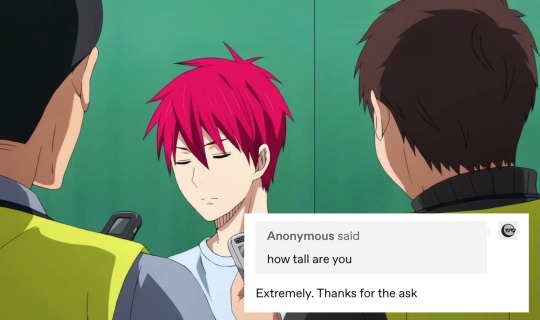
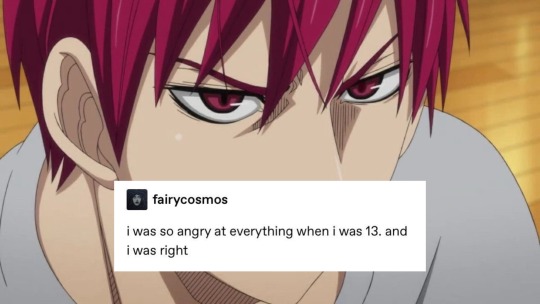



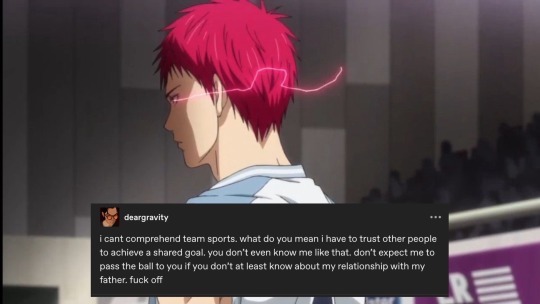


#knb#kuroko no basket#kurobas#akashi seijuro#the last one probably#bokushi is my little guy who is trying very hard to care for people but no one rly taught him to love so he’s figuring it out#sorry for excessive akashi posting he’s all i think about#🥀.textpost#textpost analysis is a valid method of character study#akashi seijirou
145 notes
·
View notes
Text
How to fight a negative thought
As always, I will love to hear your thoughts! and if you have any questions, I will be more than happy to answer them! If you liked it, leave a comment or reblog (that is always appreciated!). if you are intrested in more method check the masterlist!
(Before we start, I want to actually suggest a book by Dr. . Julie Smith, "Why has nobody told me this before?" It is filled with tools that we can use to fight our mind when we know it is not acting right.)
Im going straight to the point here: negative thoughts can be frustrating. When it comes to manifestation, there is no difference, so with this, I am going to teach you how to deal with negative thoughts and reprogram your brain.

The negative thoughts are normal in every person there, for in every community, it is normal to experience a bad thought, and sometimes a bad thought can ruin our lives and slow us down for a whole day. In this post, I'm going to give you a list of things that can help you realize a bad state of mind. When we want to start to realize these little things, we can catch them with way more ease than our negative thoughts.
Let's start with baby steps:
Our mood is influenced by our thoughts, and vice versa.
Give your negative thoughts logic. If you can't find logic, then why worry? ex: "Everybody hates me." In the logic, it will be "I am my own person, and the price to pay is that I am not going to be loved by everyone, and I can literally name who loves me."
Write about it, talk about it, and let your negative thoughts go. Don't let them stay inside of you because they will stagnate and produce mold like rotten fruit.
Don't search for temporary distractions for a long-term problem; feel it, cry if you need to, and have knowledge of what made you feel bad.
The more you realize your negative thoughts and what triggers them, the easier it will be to replace them and change the story.
Now some hard truths:
Our emotions lie to us; our emotions aren't 100% truth.
We choose to be happy or sad, and what we do about it is our fault.
You are your own brain; you can control your thoughts.
Our first reaction to a negative thought is fear, because we are scared that it might be the truth.

What do I have to do with all this information?
Witness your negative thoughts, own them, and stop them by making positive remarks.
Be patient with yourself; you are learning, you are healing, you are living your life, and you are allowed to make mistakes.
Witness your positive thoughts, own them, and give yourself the credit that you need.
All your manifestations are coming your way, and you are going to live the best life ever. Allow yourself to be and exist.
#manifestation#manifesting#shifting methods#loa methods#manifestation method#spiritual development#manifesation#journal#explain the method#explained#loa affirmations#loa tumblr#loassumption#loassblog#loa#loa blog#loans#loablr#affirm and persist#law of manifestation#neville goddard#how to manifest#negative thoughts#life stuff#mental health#positive mental attitude#therapy#validation#thoughts#thinking
46 notes
·
View notes
Text
Type of Glassware use in pharmaceutical and chemical, pasticised industry
In the pharmaceutical industry, glassware is also classified based on its quality and accuracy, much like the Class A and Class B classifications commonly used in laboratory glassware. The classification of glassware in pharma is typically based on standards set by regulatory authorities like the United States Pharmacopeia (USP) and the European Pharmacopoeia (Ph. Eur.). The main classes used in…
View On WordPress
#Analytical chemistry#Analytical method development hplc#Gas chromatography (gc)#Glassware#Hplc#Method validation#OOS#Potentiometric Titration
1 note
·
View note
Text
So I finished the Rimet Cup Event
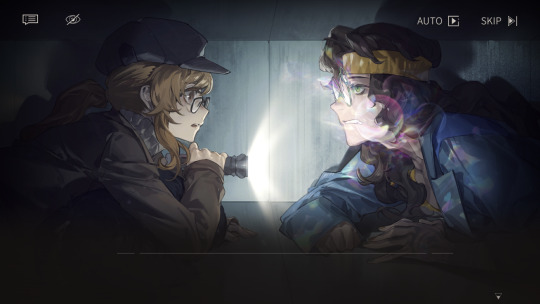




It was really good! I enjoyed the event story a lot, mostly because of the characters and how they moved the plot along. Nothing felt boring or dragged out longer than it should, plus the character interactions were funny and wholesome.
Melania was a queen, I thought she was cool at first but seeing her in action was amazing. I also liked her dynamic with Ms. Acey, and her plan to steal the Rimet Cup was interesting to watch unfold. Pickles was cool too, though what really got me invested was his relationship with Charlton. Regulus and Mr. APPle’s side plot was funny, I’m glad I got to see more of them.
The character who really stole the show for me was Diggers. I already liked him because prior to this event I thought he was a typical chill hippie dude that was just a little in over his head. Then I found out that apparently people hated this guy because it turned out he was lowkey a terrorist??? Bro was stealing documents, disrupting the peace, drugged a whole BLOCK of people to throw an improvised block party, and apparently in a scene I haven’t seen yet, kidnapped Pickles because he got more attention than him?!
I thought my opinion on him would shift watching these events unfold but no, I love him all the same. He’s just this chaotic, silly lil dude who wants to spread peace (by doing it in the worst way possible)! This man was honestly hilarious, and the fact that he may or may not have joined the Manus Vindictae in 1.4 is just insane to me. Bro really thought the best way to spread peace and love was to join a literal terrorist cult, that’s actually hilarious.





TL;DR: event rerun was great, Diggers was the best character, I love him 🥰
#reverse 1999#reverse 1999 diggers#i love him so much#And before anyone asks:#No I do not agree with this man’s methods#Nor would I support him if he were real#I just find him incredibly entertaining#Also if you hate diggers thats totally valid#I can understand how a good chunk of people hate him for being a peace disturbing hypocrite who only opposes the law unless it suits him#Plus theres the whole “drugging people” thing#I just appreciate how Reverse 1999 is ok with making characters who are genuinely flawed and not just superficially imperfect#Anyways thats all I have to say goodbye and good luck on your pulls 👍
28 notes
·
View notes
Text
august bucket list :
☑ change theme


☑ spend 120 hours in the library


☑ study in the cafe


☐ complete the current syllabus


☑ pull an all nighter


#studyblr#study blog#study aesthetic#study motivation#premed#student#student life#study desk#study notes#academic validation#bucket list#study hard#study method#messy studying
204 notes
·
View notes
Text

‘tex design
#close enough welcome back terezi#he only tortures for fun he knows its not an efficient method of valid interrogation#thats why he lobotimises his victims instead#transformers#maccadam#hermes art#vortex#transformers redesign#combaticons#transformers hyperlink
21 notes
·
View notes
Text



❥﹒♡﹒☕﹒ 𝗵𝗼𝘄 𝘁𝗼 𝗿𝗲𝗰𝗼𝘃𝗲𝗿 𝗳𝗿𝗼𝗺 𝗮 𝗯𝘂𝗿𝗻𝗼𝘂𝘁; this is my personal way of coping with burnout, it may not work for you, but feel free to share in the comments the things that make you feel better when you feel this way ( blogger's note at the end of the post ).
𝟭. recognize the signs ( 🏳️ )
the moment of denial is over. i know, burnouts always come at the worst times when you have upcoming exams and a thousand things to do, but ignoring it won't get you anywhere, on the contrary, it will only prolong the worst, so recognizing and accepting the signs of burnout is the first step to getting out of it. if you don't end it, it'll end you, right? some common symptoms of burnout are exhaustion, excessive irritability, hormonal imbalances, change in appetite (too much or too little), sleep irregularities, increase in nervous tics.
𝟮. take time off ( 🫧 )
allow yourself to rest and recharge by taking a break from work or other stressors. depending on the severity of the burnout you may need an afternoon, or perhaps a couple of days to recover, it's not important, the important thing is that you reserve some deep rest that can really recharge you to start studying/working again. put off all non-essential tasks, put your phone on do not disturb mode and allow your brain to rest. if you have slept little in the previous days, taking a nap will not be bad.
𝟯. set boundaries + practice self care ( 🌱 )
establish clear boundaries between work and personal life to prevent burnout from reoccurring. prioritize activities that promote physical and mental well-being, such as exercise, meditation, and hobbies. i personally love taking care of my body doing beauty treatments that make me feel better about myself. i also deep clean my room and change my bedsheets, if it's true that the mess in our room is a reflection of the mess in our mind i can't see why it can't go both ways: removing the mess from my room is like cleaning my head from the stress in it.
𝟰. rearrange priorities ( 🐝 )
delegate everything you can delegate, you can't do everything alone and it's normal to seek support from colleagues and family. reorganize yourself so you have a plan to follow as soon as you recharge your batteries. ask yourself what led to burnout, was it the workload? in that case breaking it into smaller tasks could make it less onerous. maybe it was it's difficulty? maybe asking for help or using some time for additional research might work. in short, prepare a realistic scheme to follow to tackle the task.
𝟱. seek support ( ❣️ )
talk to friends, family, or a therapist about your feelings and experiences to gain perspective and emotional support.
𝗯𝗹𝗼𝗴𝗴𝗲𝗿'𝘀 𝗻𝗼𝘁𝗲 hi everyone, it's no secret that i've posted very little in the last week, but unfortunately i experienced a bad burnout that incapacitated me for a few days. family circumstances, academic stress and the arrival of spring have added up to take away the strength to do anything from me, but i'm here to recover and here is a simple guide that i always follow when i find myself in these situations. on the one hand i'm happy tho, it's my first burnout since i started university, eight months ago now, i remember that when i was in high school they were much more frequent and long, i feel i've become much more stable.
#college#education#school#academia#note taking#student#study aesthetic#study blog#study inspiration#study motivation#study notes#study tips#studyblr#studyinspo#studyspo#chaotic academia#academic validation#light academia#dark academia#uni life#university life#university#university student#burnout student#burnout#how to deal with burnout#coping mechanism#coping methods
248 notes
·
View notes
Text

He came to me in a vision
#holding him in my hands#offering him to tumblr like a lone coin#he’s a valid payment method in my heart#raiden metal gear#raiden mgs#raiden#mgs fanart#mgs#fuck yes i AM tagging this like its big art#he’s big art to me#mgs2#metal gear solid 2#metal gear series#metal gear fanart#metal gear solid#my art
47 notes
·
View notes